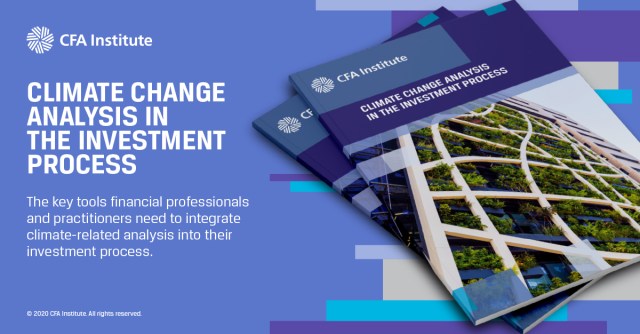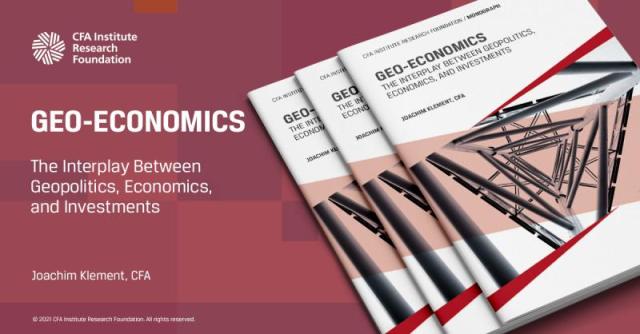[ad_1]
“The days of the internal combustion engine are numbered.” — Neal E. Boudette and Coral Davenport, The New York Times, 28 January 2021
What precipitated such a dramatic pronouncement? General Motors (GM) had just released its plan to phase out traditional petroleum-fueled automobiles and sell only zero-emissions vehicles (ZEVs) by 2035.
While attention-grabbing, GM’s was not the first move in this direction. In fact, many governments around the world have established targets for the transition to electric vehicles (EVs) or ZEVs. Among them:
- China has a program to phase out conventional autos by 2035.
- The United Kingdom announced a ban on new petroleum-powered cars by 2030.
- The United States does not currently have a federal mandate, but several states have their own targets. California, for example, intends to retire gasoline-powered cars by 2035.
GM’s announcement was quickly followed by similar ones from its competitors: For example, Volvo said it plans to go fully electric by 2030 and Jaguar Land Rover declared the Jaguar brand will be electric-only as soon as 2025.
Such a technological shift driven by environmental initiatives has significant financial implications, both within the auto sector and across the broader global economy and financial markets.
Markets need consistent, comparable, and reliable sustainability information to better understand these developments and the related environmental, social, and governance (ESG) issues. That’s where ESG reporting frameworks and standards, such as those developed by the Sustainability Accounting Standards Board (SASB), come in. Responses to SASB performance metrics can enhance financial analysis as the transition from gas-powered vehicles continues to evolve.
Fuel Economy and Use-Phase Emission
Among the five disclosure topics in SASB’s Automobiles Industry Standard is Fuel Economy and Use-Phase Emission. This metric focuses on fleet fuel economy, production of ZEVs, and a qualitative discussion around related strategy.
SASB Standard: Fuel Economy and Use-Phase Emissions
| Sales-Weighted Average Passenger Fleet Fuel Economy, by Region | Quantitative | MPG, L/km, gCO2/km, km/L | TR‑AU‑410a.1 |
| Number of (1) Zero-Emission Vehicles (ZEVs), (2) Hybrid Vehicles, and (3) Plug-In Hybrid Vehicles Sold | Quantitative | Number | TR‑AU‑410a.2 |
| Discussion of Strategy for Managing Fleet Fuel Economy and Emissions Risks and Opportunities | Discussion and Analysis | n/a | TR‑AU‑410a.3 |
Several firms are already reporting to the SASB Automobiles Standard, which can help put the magnitude of their commitments into perspective — for example, by evaluating current sales of low/zero-emissions vehicles against total company sales (an activity metric identified in the SASB Standard). However, it is important to recognize that even within an industry, business models can vary and those considerations should be incorporated when analyzing reported data.
Select Reporting to SASB Fuel Economy and Use-Phase Emissions Metric
| Company | Electric or ZEV | Total Alt Fuel | Total Cars and Vans |
| Daimler | 47,672 | 162,863 | 2,202,579 |
| Ford | 9,595 | 79,903 | 5,500,000 |
| GM | 111,950 | 141,393 | 7,718,000 |
| PSA | 17,606 | 27,414 | 3,479,096 |
| Toyota | 1,922,000 | 8,958,423 |
Source: Company SASB reports for 2020
Why Does This Matter?
As governments phase out the sale of gas-powered autos and companies commit significant resources to support this transition, firms that can best deliver low-emissions vehicles stand to prosper. Arguably this is a prime factor contributing to Tesla’s strong share performance. Company shares rose from roughly $110 to $680 over the past 12 months. And while many dynamics drive valuation, one analyst noted that electric vehicle (EV) growth in China could be a catalyst for the EV market overall and for Tesla in particular.
Further demonstrating the scale of this transition, Ford announced plans to invest $22 billion in EVs through 2025 and $29 billion combined on electric and autonomous vehicles. This mirrors GM’s plan to invest $27 billion in these areas between 2020 and 2025. Indeed, according to the automaker PSA Group, 37% of the company’s R&D spending is dedicated to clean technology.
But the transition to lower emissions also carries risks. Several automakers have struggled to meet emissions restrictions in Europe and had to pay fines or purchase effective offsets. After missing its targets, Volkswagen accrued over €100 million in penalties. Ford risked a €1.2 billion fine after an EV recall threatened its ability to meet its emissions target, but avoided the penalty by acquiring credits from Volvo.
In contrast, companies that meet or exceed emission targets can create new revenue streams. For example, in five years, Tesla has generated $3.3 billion through the sale of regulatory credits, including around $1.6 billion in 2020 alone.
Of course, EVs are not the only route to reducing auto emissions and adhering to the mounting zero-emissions-related regulations. Hydrogen-powered vehicles are another area of research. The SASB Standard metric TR‑AU‑410a.3’s focus on a qualitative discussion of strategy can surface critical details about the different technological approaches.
Product Safety
As the auto industry deploys new
technologies, new risks and safety concerns can emerge and reporting to the
SASB Automobiles Standard metrics can yield useful information about their
scale and scope.
One consequence of the shift to electric vehicles are more reports of battery-related fires. In late 2020, Ford delayed the launch of a hybrid plug-in vehicle because a similar model experienced battery fires. BMW recalled 10 models because of fire risk attributed to debris in the battery cell and Hyundai recalled about 75,000 vehicles over similar concerns. To be clear, these are not necessarily frequent occurrences relative to combustion engine equivalents, but they illustrate some of the potential challenges associated with deploying new technologies.
SASB Standard: Product Safety
| Percentage of Vehicle Models Rated by NCAP Programs with an Overall Five-Star Safety Rating by Region | Quantitative | Percentage (%) | TR‑AU‑250a.1 |
| Number of Safety-Related Defect Complaints, Percentage Investigated | Quantitative | Number, Percentage (%) | TR‑AU‑250a.2 |
| Number of Vehicles Recalled | Quantitative | Number | TR‑AU‑250a.3 |
Additionally, it is not entirely clear how these new parts and materials will wear over time. In late 2020, news reports indicated that certain older Tesla models were associated with reports of battery fires, which has led to litigation as well as federal investigation.
Why Does This Matter?
Implementing vehicle recalls comes with financial costs. These recalls could also force a delay in the addition of a new vehicle to a lineup, with potential for lost revenue. Fires and other events can turn off prospective buyers and affect the whole market. Companies that sell defective products may face litigation risk.
On the other hand, a reputation for
safe and reliable vehicles can be an advantage; several automobile
manufacturers emphasize safety features and records in their product marketing.
These sorts of distinctions could be a strong differentiator with consumers.
Materials Sourcing
Just as new technologies bring new
risks, they also bring new resource demands. EV battery production relies on
lithium, cobalt, and nickel, among other materials, and demand for these
substances has spiked, creating potential supply chain issues.
SASB Standard: Materials Sourcing
| Description of the Management of Risks with the Use of Critical Materials | Discussion and Analysis | n/a | TR‑AU‑440a.1 |
Tesla has responded to the resource challenge by switching some of its vehicles to an iron rather than nickel battery. But that decision comes with tradeoffs. Nickel batteries tend to store more energy and are less reliant on cobalt, which has a somewhat opaque supply chain. Tesla has also sought to secure its long-term nickel supply by entering into a technical partnership in a nickel mine in New Caledonia in the South Pacific.
Securing lithium is obviously essential to the production of lithium-ion cells and presents similar supply challenges as nickel. To this end, Tesla bought the rights to a 10,000-acre parcel in Nevada where it plans to extract and refine the material.
Why Does This Matter?
Such developments demonstrate some of the potential consequences of surging demand for materials and the associated shortages that can result. Costs rise when a resource becomes scarce. Reconfiguring production to use alternative materials can add to R&D and capital expenditures, and supply shortages may lead to halts in production.
And when companies mine their own materials, they incur new expenses and operational risks. The supply chains of rare resources can be sensitive and can create negative community and ecological impacts that can contribute to reputational damage.

Materials Efficiency and Recycling
The shift to ZEVs also has implications for what happens at the end of a vehicle’s useful life. The SASB Automobiles Industry Standard addresses this issue with its Materials Efficiency and Recycling topic, which includes metrics on waste from manufacturing, recovery, and the recyclability of vehicles sold.
SASB Standard: Materials Efficiency and Recycling
| Total Amount of Waste from Manufacturing, Percentage Recycled | Quantitative | Metric Tons (t), Percentage (%) | TR‑AU‑440b.1 |
| Weight of End-of-Life Materials Recovered, Percentage Recycled | Quantitative | Metric Tons (t), Percentage (%) | TR‑AU‑440b.2 |
| Average Recyclability of Vehicles Sold | Quantitative | Percentage (%) by Sales-Weighted Metric Tons (t) | TR‑AU‑440b.3 |
The shift to EVs adds new focus on that final metric: recyclability. In particular, the recycling of EV batteries has come under increased scrutiny. This has led to new business activities, such as new ventures that are deploying used car batteries to store energy supporting the power grid.
But the intensifying focus may lead to new regulatory burdens. The EU has proposed requiring recycled lithium, cobalt, and nickel content in EV batteries. An EU commissioner described this rule, which would require disclosure of recycled content in their batteries, as “ambitious but realistic.”
Why Does This Matter?
Such regulations could affect
operating costs, particularly if there aren’t enough recycled materials to keep
up with demand. Failure to meet the new regulations could result in fines and/or
lost sales.
To address this issue, Volkswagen Group
opened a pilot car battery recycling plant in Germany earlier this year. Scaling up such
efforts could require capital expenditures. Companies that meet this challenge
by using materials in new ways — for energy storage, for example — or by
developing more efficient techniques to recover the materials, could give
themselves an advantage.
Labor Practices
The final piece in the SASB Automobiles Standard is Labor Practices. The production processes for the various ZEV technologies have different workforce requirements and it is possible some conventional automobile manufacturing facilities will be shut down.
SASB Standard: Labor Practices
| Percentage of Active Workforce Covered under Collective Bargaining Agreements | Quantitative | Percentage (%) | TR‑AU‑310a.1 |
| (1) Number of Work Stoppages and (2) Total Days Idle | Quantitative | Number, Days Idle | TR‑AU‑310a.2 |
Future plants may not need as many workers. Why? Because electric vehicles have between 30% and 40% fewer moving parts than their gas-fueled peers. At the same time, manufacturing new products may require the construction of new operating facilities, which come with new employment opportunities.
Lordstown Motors repurposed a closed GM factory to produce EVs. The associated labor challenges were instructive. In a recent SEC filing, the company observed:
“Although the area surrounding the Lordstown Complex is home to a highly trained workforce with experience working in the Lordstown Complex and manufacturing vehicles, the workforce does not have experience with electric vehicle manufacturing and many jobs will require significant training. . . . If we are unsuccessful in hiring and training a workforce in a timely and cost effective manner our business, financial condition and results of operations could be adversely affected.”
Transparency into automakers’ workforce management strategies is a growing priority for investors. How will companies train and recruit their employees to run new production processes and manage any potential future restructuring amid the ZEV transition? If companies can’t secure the necessary technical expertise to develop and scale up production, they’ll miss their targets. At the same time, poor labor relations could slow production and lead to strikes or walk-outs. Those firms that develop strong relationships with their employees may improve worker productivity and better position themselves for long-term financial sustainability.
Some Broader Impacts
While mandates and commitments to convert from conventional to ZEV will have broad implications for the automobile industry and its suppliers, such a significant transition could have repercussions across a wide range of industries.
Again, the SASB Standards can provide some insights.
1. Oil and Gas Exploration and Production
More automobiles powered by electricity, hydrogen, or other non-traditional fuels could reduce demand for carbon energy, creating potential risks for that industry.
In fact, several prominent companies, including Repsol, incurred large asset write-downs in 2019 that were attributed in part to the transition to a lower-carbon economy. The SASB Standard for Oil and Gas — Exploration and Production includes a disclosure topic covering Reserves Valuation and Capital Expenditures, which can offer some insight into this issue.
Associated metrics ask companies to discuss “how price and demand for hydrocarbons and or/climate change regulation influence the capital expenditure strategy for exploration, acquisition and development of assets.” This has clear implications for reporting companies’ future growth. Another metric requests data on investments in renewable energy and revenue generated by renewable energy sales.
Reviewing such disclosures and engaging with management on this issue might offer useful perspective on corporate strategy and positioning. Beyond reserves at risk, other potential exposures across the oil and gas ecosphere include gas refining and potential shifts at service stations as fewer vehicles need to fill up on petrol.
2. Electric Utilities
As vehicles are increasingly fueled by electricity rather than petroleum, pressure will likely mount on electric grids, which may require investment in order to meet the increased demand. Moreover, the environmental benefits of EVs depend on the type of power the utility is generating. An EV propelled by wind-generated electricity will have lower emissions than one driven by coal-powered electricity. The SASB Standard for Electric Utilities and Power Generators includes a disclosure topic on Grid Resiliency.
The SASB Engagement Guide notes that investors might want to ask a company’s management about its strategies to test for and ensure the reliability and quality of its service networks. Are significant capital investments needed to improve the long-term reliability and quality of the distribution network? How management responds to such questions could shed light on capacity to meet the transition to EVs.
The SASB Electric Utility Standard also asks companies to disclose total electricity generated as well as the percentage by major energy source and the percentage in regulated markets.
3. Renewable Energy
As utilities respond to rising demand to charge EVs by investing in their capacity, it could further increase demand for renewable energy. Growth in wind and solar capacity could raise issues around materials sourcing, the potential ecological impacts of new projects, and how such projects are integrated into the larger grid. These are all topics covered in the SASB Standards.
The switch to electric and zero-emissions vehicles presents significant risks and opportunities to automakers and other companies. Indeed, it could be an integral component of the largest energy transformation since the Industrial Revolution.
As automakers gradually retire the
internal combustion engine, investors need consistent, comparable, reliable
data to assess their exposures, including the associated corollary effects on
the larger economy and markets. The SASB Standards in general and the SASB
Automobiles Industry Standard in particular can serve as a helpful dashboard in
that effort.
If you liked this post, don’t forget to subscribe to the Enterprising Investor.
All posts are the opinion of the author. As such, they should not be construed as investment advice, nor do the opinions expressed necessarily reflect the views of CFA Institute or the author’s employer.
Image credit: ©Getty Images / Chesky_W
Professional Learning for CFA Institute Members
CFA Institute members are empowered to self-determine and self-report professional learning (PL) credits earned, including content on Enterprising Investor. Members can record credits easily using their online PL tracker.
[ad_2]
Image and article originally from blogs.cfainstitute.org. Read the original article here.







